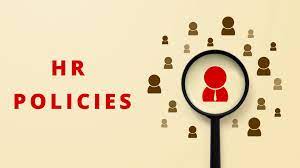Posted by: Rajat Kumar, Head of Finance

HR Technology has been used to streamline operations, to enhance efficiency, and to improve effectiveness across business functions. With a hybrid workplace shaping the future of work and the modern worker, the use cases for HR technology are amplified.
Technologies such as Artificial Intelligence, Machine Learning, Automation, Internet of Things are ushering a digital HR transformation. This is aided by the fact that digital savviness is one of the key talent magnets for a generation of millennial and GenZ workforce. To meet these expectations, it is important that organizations embark on the digital HR journey with a clear purpose and process. This starts with identifying the HR areas that will truly be benefited from HR tech.
Payroll Management
Payroll management is often considered a transactional element of HR, due to its seemingly operation-heavy nature. Yet, it is important to note that much of HR is held together with this core hygiene factor which impacts employees directly. For example, an employee not getting his or her salary due to a basic error such as a miss in payroll input, can lead to an unwarranted impact on the financial wellbeing of the person. From a business perspective, payroll errors can lead to a huge cost impact, either in terms of financial leakages or legal litigations.
It is critical to solve payroll challenges proactively, using technology:
- Clearly define payroll processes and policies:Since any payroll system takes inputs from various sources such as multiple departments and multiple people, it becomes essential to validate the various data sources and data inputs and to not miss payroll deadlines. This can be achieved by defining the payroll processing norms and timelines and factoring these into the payroll system. Payroll professionals must include guidelines related to leave, attendance, time and expenses, invoicing, reimbursements, compensation, etc.
- Adopt privacy-enhancing salary computations:Salary computations are often automated through Applicant Tracking System (for candidates) and through the payroll system (for employees). It is important to uphold the data privacy of the stakeholder by ensuring that HR technology systems are embedded with features such as two-factor authentication, encryption, etc. With changing data privacy laws, the payroll related analytics capabilities must uphold privacy policies from both a current and future perspective.
- Build in the cloud:With the workforce becoming increasingly global and virtual, a great idea is to enable a cloud-based payroll system earlier in the company’s operations. It increases performance and productivity by automating routine processes and minimizing risks. With the cloud, HR teams can access, run, and control all aspects of payroll with just a computer and an internet connection, without the requirement of onsite data storage facilities.
- Code in compliance checks:Payroll management calculations involve a huge volume of statutory compliance checks related to TDS, EPF, etc. Total reliance on manual processing by humans is bound to create errors. Hence it is important to build a payroll management system based on compliance and legal adherence. However, it is important to build human-led checks and balances too, to allow for a judgement call in certain cases.
- Build a ‘secure’ system and align cyber security priorities:Given the extremely confidential nature of data that a payroll system holds, it is critical to secure the system using adequate cyber security means, in line with cyber security laws. This is especially true in the post-COVID era where remote working has become the new normal and many organizations are sticking to work-from-home or turning to hybrid working. Many employees working out of personal devices exacerbate the risk of cybercrime.
- Automate payroll communication:Modern-day payroll systems must have the functionality to automate payroll communication. Whether it is releasing payslips across different levels, functions, job roles in a timely manner, or communicating a change in compensation policy, intuitive functionality to send and receive communication is important for modern-day payroll systems.
Apart from the above features, payroll management can add greater value if it is integrated with the overall HRIS. For example, the payroll data must flow to other HR areas such as employee compensation, rewards and recognition, performance management. HR can tap into data to make talent decisions holistically.
Whether you identify the right talent using a ‘build or buy’ approach, there’s a need for putting in place systems from a place of simple, yet accurate and avoid unnecessary complicating the workflow . An error-free payroll process can go a long way in streamlining and sustaining organizational processes.
 011-46039993 (Ext. 21 to 32)
011-46039993 (Ext. 21 to 32)
Leave your comment